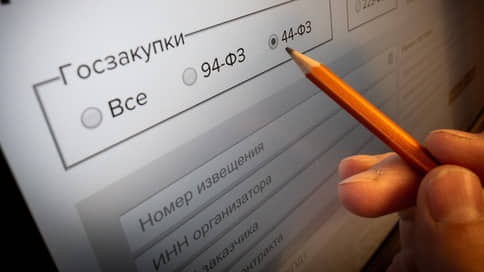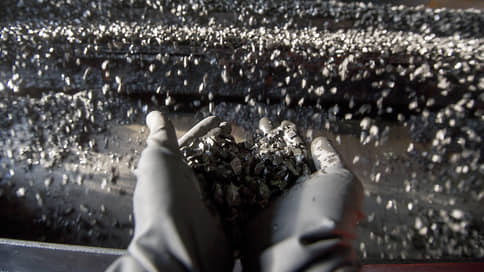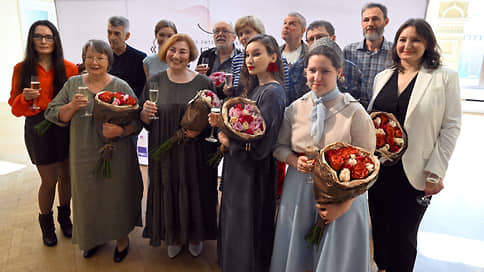In 2024, the volume of procurement of state -owned companies reached a record 35.3 trillion rubles

Purchases of state -owned companies secure the status of the main channel of the budget stimulation of the economy: a significant part of government spending passes through them, and management control over their activities is intensified. According to the Ministry of Finance, the volume of state -owned companies, after the return of the visibility of the “sanctions” purchases of the Gosao, reached 35 trillion rubles in 2024, almost one and a half times higher than the level of 2021. Meanwhile, state customers actually reduced the volume of contracting: purchase expenses did not increase after inflation, slightly declining by 2023. Data on public procurement also showed a deficit of the proposal: Russian manufacturers are not able to close the needs of customers, while the number of failed procurement is growing – suppliers do not come to bidding.
According to the Ministry of Finance, in 2024, the volume of procurement of state -owned companies reached a record 35.3 trillion rubles. – In 2023, this indicator amounted to 27.7 trillion rubles. The number of contracts according to 223-ФЗ decreased from 358 million to 278 million, that is, the average contract almost doubled. A sharp increase in contracting volumes is partly explained by the return of visibility to the purchases of state-owned companies: due to sanctions risks since 2022, customers could not publish part of the data about their purchases-they were not even available to the Ministry of Finance. According to market participants, then up to half the contracts could go into the shadow. Since April 2023, the Ministry of Finance ordered the state -owned company to report on “sanctions” purchases in a closed segment of a unified information system in the field of procurement, but statistics were distorted for the year (see “Kommersant” from August 1, 2023 And May 2, 2024). Until today, correct statistics are available only in 2021: then state -owned companies have concluded 1.68 million contracts for 22.9 trillion rubles.
Partly, the expansion of the volume of state orders is explained by inflationary growth. However, the situation in the state’s procurement is reverse: customers under the law on public procurement (44-ФЗ) concluded in 2024 3.58 million contracts for 11.98 trillion rubles. In quantitative terms, this is 2.2% more than in 2023 (3.51 million contracts), in the monetary – the volume remained practically unchanged (12 trillion rubles a year earlier). The average price of the contract thus decreased from 3.4 million to 3.3 million rubles.-taking into account inflation, the real value of the 44-ФЗ contract decreased more significant.
Data on the procurement of the state and state -owned companies may indicate an increase in the status of state -owned companies as the main channel of budget stimulation.
A de facto its volume through the 44-ФЗ channel is reduced: in 2024 expenses in 2025–2027, budget consolidation promised by the government may follow. In anticipation of the cooling period and probably protecting funds from sequestration, state procurers sharply increased the volume of public procurement in the first quarter of 2025 – up to 2.97 trillion rubles, which is 17% more than last year’s volumes.
At the same time, the government more closely embeds state -owned companies into the vertical of the management for the development of the economy, adjusting their strategies in accordance with plans to achieve national development goals and increasing control over targeted means. The norms of the Budget Code have already directly linked to the provision of subsidies with state corporations with the goals of state programs – to the costs associated with the implementation of state institutions, digital control is extended (see “Kommersant” from March 19 And April 3).
The reduction in state stimulation volumes occurs against the backdrop of a reduction in competition in the state order. In 2024, the amount and volume of failed procurement increased: only 1 million purchases by 3.6 trillion rubles. They were recognized as held, another 1.47 million purchases for 7.7 trillion rubles. They were recognized as failed – that is, customers cannot be closed to close larger orders. In most cases, the contract based on such a procurement still managed to conclude – this is 1.1 million contracts for 6.1 trillion rubles. Against 0.9 million contracts for 5.3 trillion rubles. A year earlier. Most often, purchases were recognized as failed due to the submission of the only application for participation in the procurement (72%) or at all the absence of applications (24%).
The data on the procurement separately recorded the supply of the supply of Russian goods.
In 2024, the customers carried out more than half of the purchases on 44-ФЗ with prohibitions or restrictions on admission to participation in the procurement: 1.49 million notifications for 3.5 trillion rubles. In total, the volume of Russian goods, works and services amounted to 2 trillion rubles – this is 62.5% of the value volume of all goods supplied in the execution of contracts. In 2023, the Ministry of Finance estimated this volume of 2.1 trillion rubles – 68%. In total, in 2024, customers closed the quota for the purchase of domestic products for 65 groups of goods: out of 319.8 billion rubles. The customers spent on the purchase of quoted goods on Russian 169.4 billion rubles. In 49 commodity groups, the quota was not closed.
Gos casms began to conclude more contracts with the only supplier at once-their number increased from 868 thousand in 2023 to 997.6 thousand in 2024. The volume respectively increased from 2.2 trillion rubles. to 2.47 trillion rubles, the share of the total volume of contracts increased from 18.7% to 20.6%. This practice can be explained by the desire of customers to compensate for risks and conclude a contract with a proven supplier. So, the number of terminated contracts in 2024 increased – to 901 thousand by 2.97 trillion rubles. Compared to 849 thousand for 2.5 trillion rubles. A year earlier.








